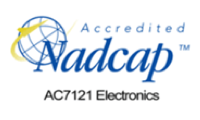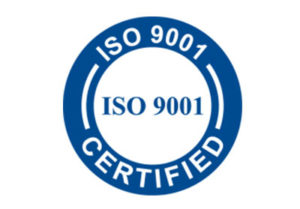Lack of capacity, along with rising operating costs and increased competitive pressures, have caused companies to explore the option of contract manufacturing for their products. Contract manufacturing outsources certain manufacturing operations to a third-party, passing on the responsibility for materials, capital, equipment, staff, and software.
Contract manufacturing allows businesses to shift their focus away from fabrication and assembly and place more emphasis on core business-related tasks such as design, development, integration, and testing. Contract manufacturing is especially ideal for companies that do not possess:
- In-house capability and/or expertise to reliably produce a certain element or multiple elements of existing or planned products
- Sufficient capacity to keep up with demand
- Contingency in the budget to accommodate unforeseen circumstances during production
- The ability to coordinate the different variables required for product creation, including raw material procurement, design, fulfillment, and delivery
Although contract manufacturing is a beneficial and valuable tool for businesses, specific steps still need to be taken to ensure the outsourcing process is as cost-effective as possible.
Is Outsourcing Tactical or Strategic?
Tactical outsourcing and strategic outsourcing are driven by different factors.
Tactical outsourcing is an approach usually employed by organizations that are seeking a short-term fix and or limited cost reductions. Companies that use tactical outsourcing tend to do so based on criteria such as cost and available delivery dates. This type of outsourcing also allows businesses to hand off limited scopes of work to gain expertise and or capacity.
Tactical outsourcing is viewed as relatively straightforward, as it is based more on immediate need. For example, an OEM may outsource overflow manufacturing to keep up with demand. A company may also outsource to free up capital funds being spent on non-core functions. Such a move can prevent the need for expending capital on additional floor space and equipment.
Strategic outsourcing, on the other hand, is much more involved, and much more impactful. In contrast to tactical outsourcing, which can be reactive and often short-term in nature, strategic outsourcing involves a more long-term focus. This type of outsourcing allows businesses to hand off functions that either cannot be performed by their organization or are difficult to control and manage.
During this type of outsourcing, decisions are made based on myriad factors and can be considerably more complex than tactical outsourcing. For instance, it often involves the restructuring of an organization based on core competencies and external relationships. Strategic outsourcing might also entail retraining certain employees to do more value-added work.
A strategically outsourced contractor is not just a vendor, but is also a partner in many ways. In a strategic outsourcing partnership, both parties have a significant stake in the relationship. The client frees up money and resources to focus on core business concerns, while the contract manufacturer offers their own core expertise that can improve the production process and maybe even the product itself. In such a relationship, the partners share risks and share investments, ultimately reducing the negative, and amplifying the positive effects on both parties.
Other benefits companies gain from a strategic outsourcing partnership include:
- Lower internal department handling costs
- Reduced inventory
- Increased capacity
- Access to state-of-the-art processes/technology
- Increased market competitiveness
- Reduced training/workforce costs and responsibilities
- Access to a lower cost structure
One of the primary goals that strategic outsourcing seeks to achieve is a reduction in the total cost of ownership (TCO).
What Should You Measure?
Knowing what metrics to use also plays a substantial role in contract manufacturer selection. Financial and operational (or non-financial) metrics represent two particular parameters that need to be considered.
- Financial metrics
Outsourcing essentially boosts economic value added (EVA) by significantly reducing operating and capital costs, while inventory reduction, increased turns, and reduced equipment, facility, and personnel costs affect the return on assets (ROA). Financial metrics are used to predict, capture and assess the economic impacts of the outsourcing initiative. They should also be used to evaluate and select the right contract manufacturer. Examining the strength of their bottom line and balance sheet, for example, is a crucial element of selecting the right outsourcing partner.
- Operational metrics
Money isn’t everything when it comes to metrics. Manufacturing success may be further evaluated by measurements such as on-time delivery, cycle times, quality, and reliability. These parameters can ultimately affect time-to-market (TTM), and overall customer satisfaction with the final product.
A Trusted Contract Manufacturing Partner
Selecting the right contract manufacturer can free up precious resources for more challenging or pressing tasks, which can ultimately improve a company’s productivity and ability to innovate. Liberty Electronics draws on decades of experience to solve complex challenges related to manufacturing, engineering, and quality. We work closely with our clients to offer superior contract manufacturing services, making us a true consultative partner.





